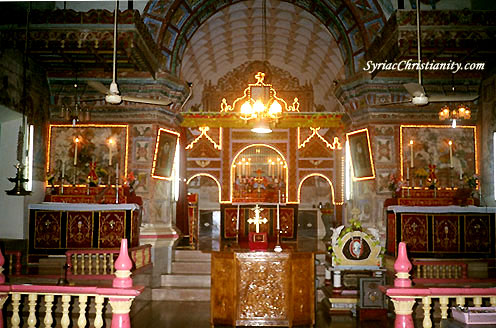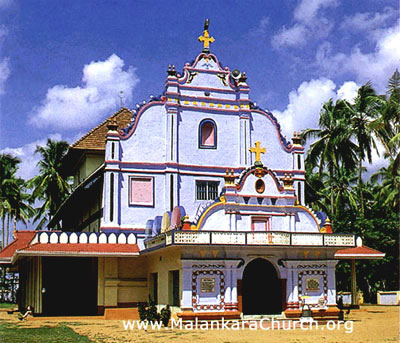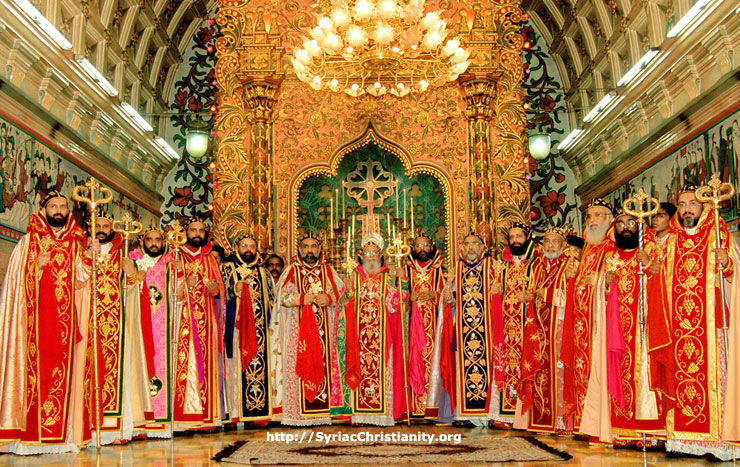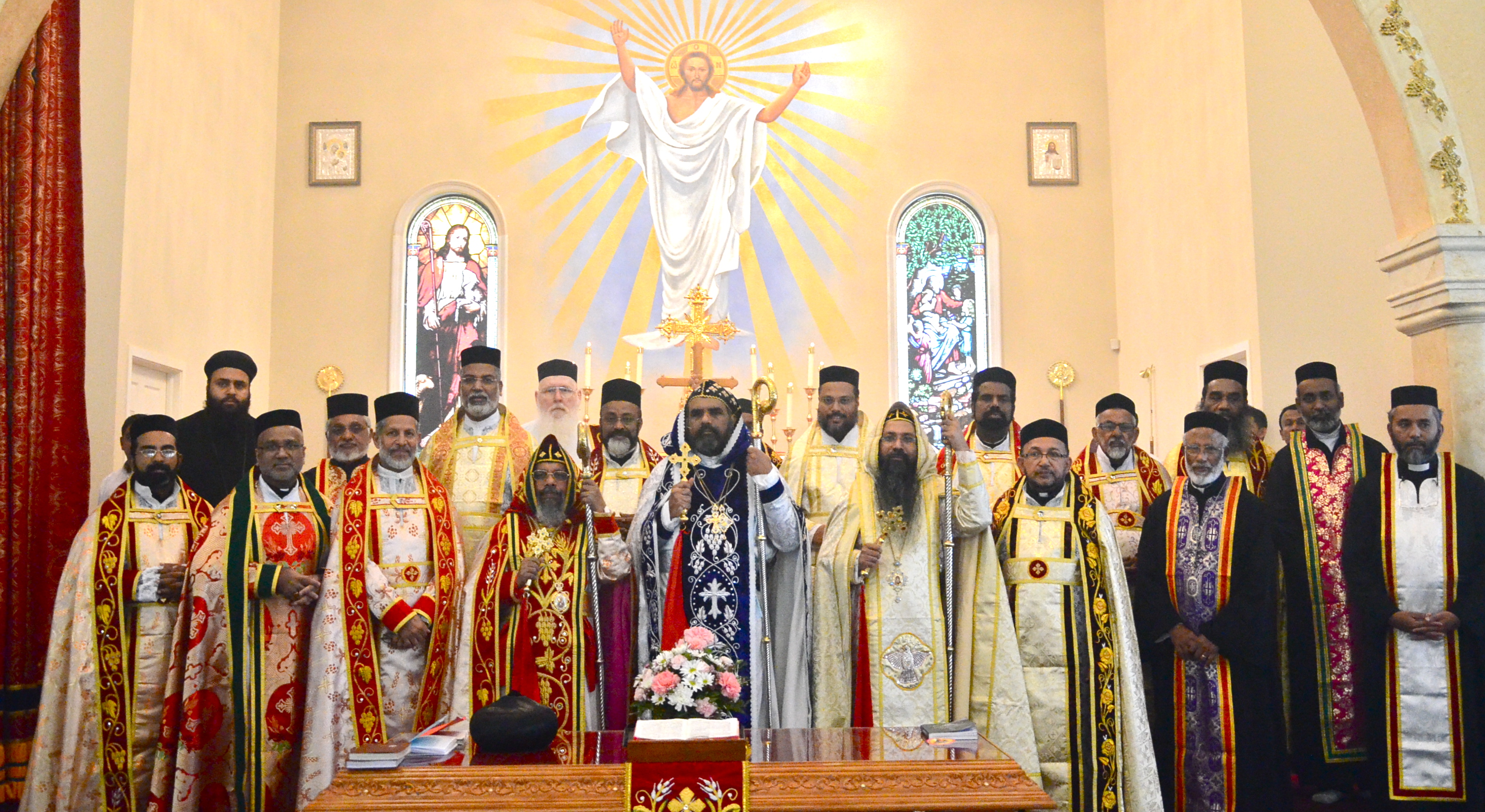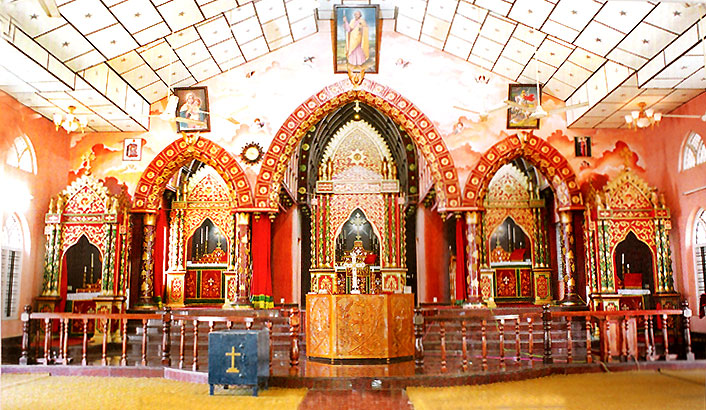Malankara Church
In India, there are a large number of Christian churches - both local and " offshoot " of Western and Eastern churches. This multiplicity can be explained on the one hand from the time of the establishment of local churches, often to the Apostle Thomas ( Thomas Christians ) is recycled, second, from the influence of Western churches, especially the Roman Catholic during the colonial period since about 1500, and the Anglican Church in the British colonial era. In the last century still were added a number of smaller Reformed churches.
By far the most important part of church history took place here in the southern Indian state of Kerala, since here (because of the because of the spice trade as active economic relations ) took place, the most common and closest contacts between India and the West.
Christians in Kerala
A percentage large part of the Indian Christians living in the southern state of Kerala: While in the entire India only about 2.3 % of people attach to the Christian faith, it is in Kerala about 20%. The reason is that Kerala historically plays a special role - for more than two millennia, it is an area in which the dealer of many foreign nations have their offices and primarily engaged in trade in spices. Jewish traders were already in the first centuries BC in Kerala, and Arab traders there are already just as long. Later, the Christians came to Kerala, and indeed from the Near Eastern countries such as Persia, from which they were expelled by the Muslims. The beginning of the Christian era in Kerala is returned by the Christians themselves to the Apostle Thomas; He is said to have converted a number of Brahmins to Christianity during his trip through Kerala. The history of Indian Christians who today also " Syrian Christians" after the region of its main origin call themselves.
The main factors
The history of Christians in Kerala is determined by three main factors:
- The traditional box structure of Indian society ( in which the Christians are involved );
- The important role of Kerala as the center of the spice trade since at least 2000 years;
- The influence of the colonial conquerors ( Portuguese and British, the Dutch have cared little about the churches).
The significance of the Indian caste system is already reflected by the fact that the Thomas Christians today take the view of the Apostle Thomas did after his arrival on Indian soil in the year 52 AD. only native Brahmins converted, whose successor the Thomas Christians were now. This story, for as for all the stories from before about 400 AD. exist no evidence lends even today the communities of Thomas Christians feeling of superiority over other Christian communities, especially to the Latin Christians who - forcibly converted- as by the Portuguese fishermen belong partly to the poorest section of society. Even today, many Christians refer to Thomas literally as a member of a higher caste, and related social differentiation and social stratification to be accepted by most members of the society as a whole as a matter of course.
Kerala's function as a center of the spice trade so far has always played an important role, as such trading, an influx of traders from the West ( Arabia, Rome, Syria ) was carried out and therefore the religions of the regions in Kerala were present. Very many conflicts within the West, such as the between Muslims and Christians and between Christians and Jews, as well as the between Eastern and westsyrischem churches had their counterparts in Kerala. The influx of Christians because of persecution by the invading Muslims throughout the Middle East from the 7th to the 9th century, for example, the historically most likely source of the Thomas Christians ( who call themselves Christians today all Syrian ).
The colonization of India by the Portuguese since 1500 had two immediate consequences for Christianity in India:
Since that time, there is the contrast between " high-caste " Thomas Christians and " members of low " Latin Christians. In the 19th century, then split under the influence of a British Anglican -influenced branch of the Thomas Christians from the Mar Thoma Church, and in the 20th century won various Reformed and Protestant churches in influence in India.
Prehistory to about 1660
The following list shows the most important data for the development of the Christians in Kerala are given until the time of the oath by the oblique cross 1653 in Cochin. Shortly thereafter begins the time of splitting, which continues today.
Overview of the schisms from about 1660
Legend to the " node " ( a) through (g)
- ( a) After the oath the Leaning Cross 1653
- ( b ) Cleavage of the Indep 1771. Church of Malabar
- ( c ) 1865 the beginning of the separation of the Mar Thoma Church
- ( d) 1888 Self Metropolitan of the Chaldean Syrian Church
- ( e) 1912 spin-off of the autocephalous Malankara Orthodox Syrian Church
- ( f) In 1934 the Roman Catholic Syro - Malankara Church, the influence arises
- ( g ) 1961 The Reformation Evang. St. Thomas Church split off from the Mar Thoma Church
Key to colors
- GREEN: churches under Anglican influence.
- VIOLET: The two large churches with westsyrischem rite ( which were of 1961 temporarily " reunited " to 1975 )
- RED: The Roman Catholic Church with three different rites ( from top to bottom: Western and Ostsyrisch, Latin ).
- BLUE: The only church that still - as well all Thomas Christians before the arrival of the Portuguese - belongs to the Chaldean Assyrian Church of the East.
Key to numbering of Churches ( 1) to ( 9)
The numbers in parentheses after the name of the church refers to the first column of the following table.
List of Christian denominations
The following list of Christian denominations in Kerala is to classify the different churches after emergence, belonging and rite.
Note: The "* " at some annual figures indicates those churches which trace their foundation to the Apostle Thomas in 52 AD.
Overview for belonging and rite
The following table summarizes the above churches to belong (vertical) and ritual (horizontal) are classified. The numbers refer to the numbering in the first column of the preceding table. A "-" indicates that the corresponding combination of affiliation and ritual can not occur.
Notes:

